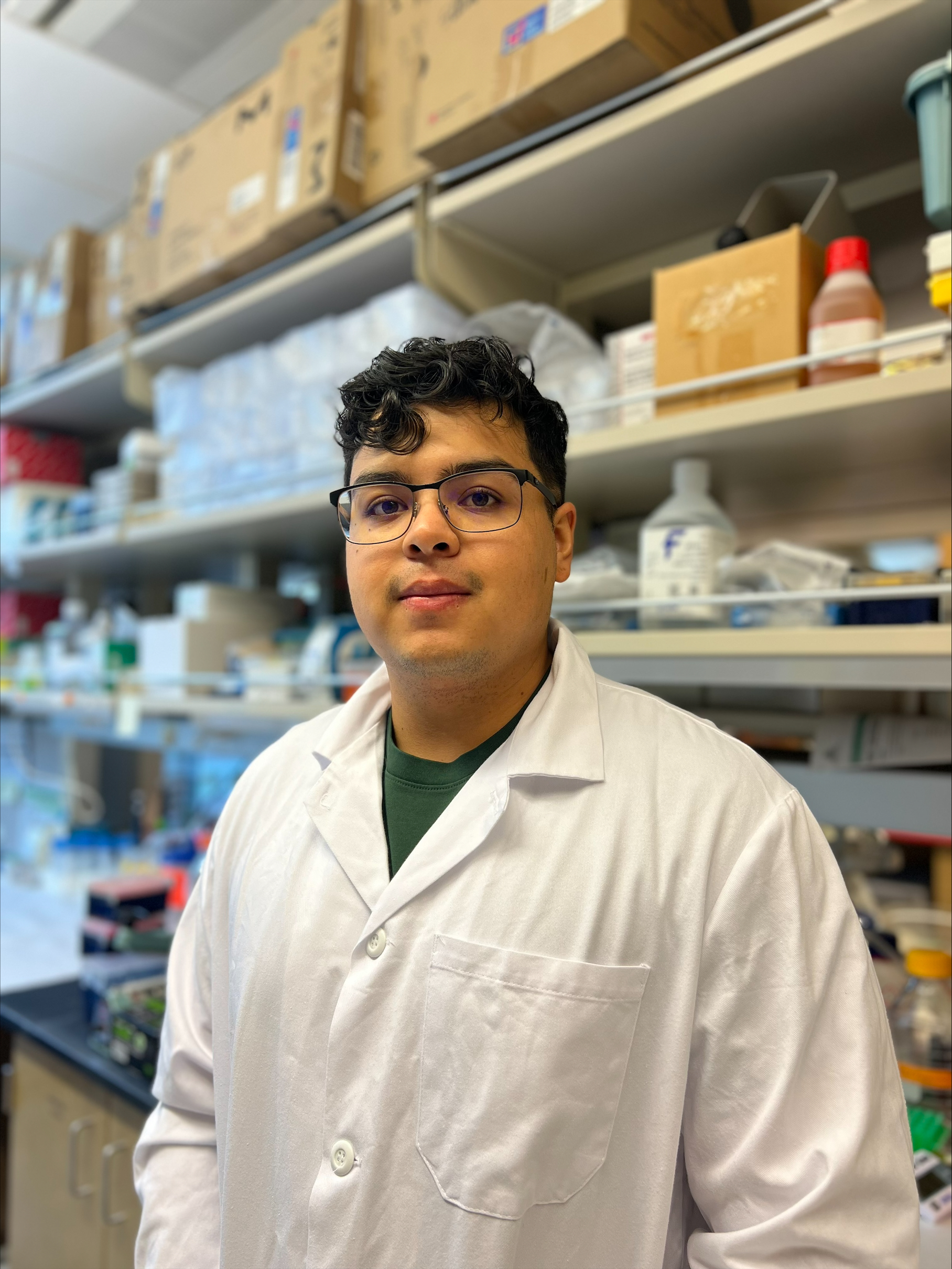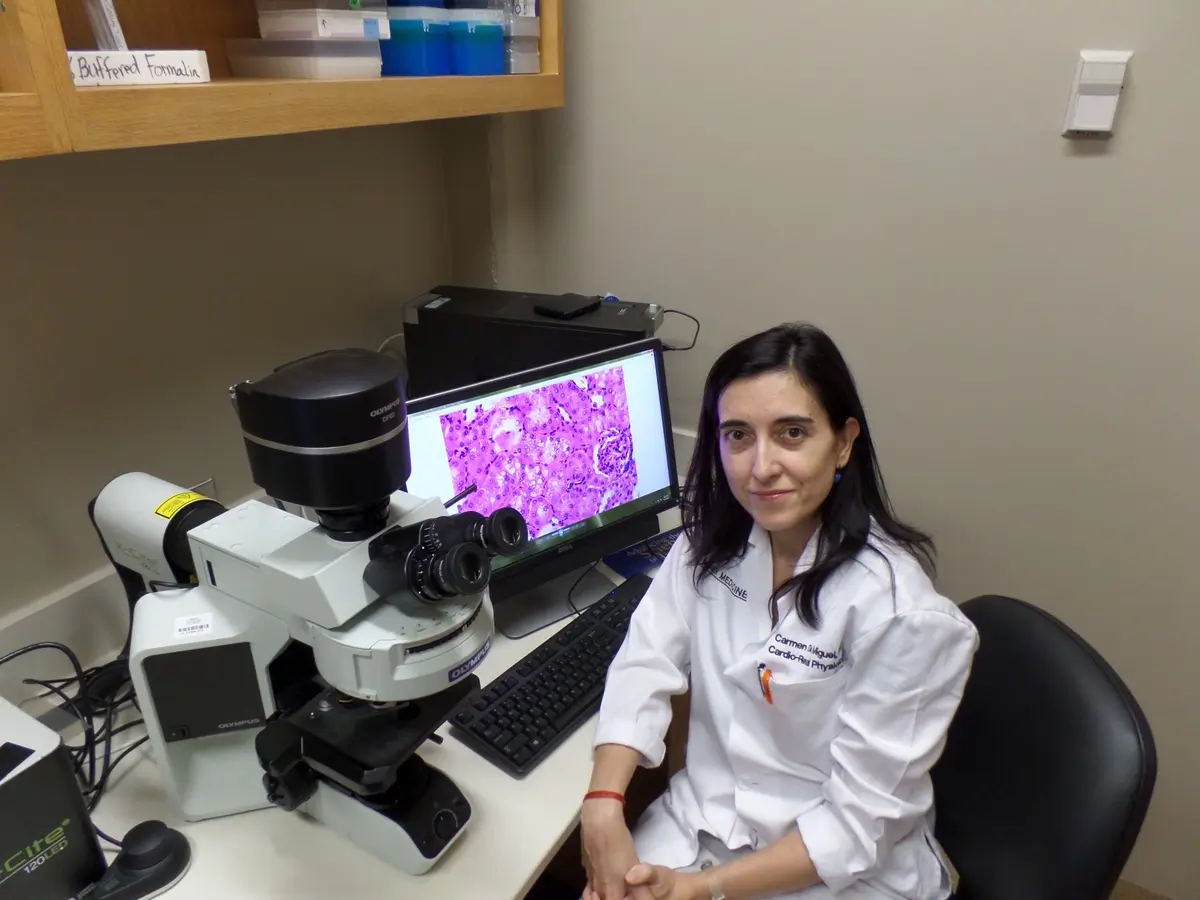Final Project Update
During the preceding six-month period, we executed a comprehensive loss-of-function screen, leveraging CRISPR/Cas9 technology, to identify regulators of mitochondrial functionality in β-cells across the entire genome. This unbiased investigation enabled us to discern 833 positive and 330 negative regulators of mitochondrial activity in human pluripotent stem cell-derived pancreatic β-cells (SC-β-cells).
In the current reporting period, our focus was on understanding the transcriptional regulation of these candidate genes, by employing a gene regulatory network (GRN) analysis. In order to accomplish this objective, we utilized single-cell genomic datasets, derived from both SC-β-cells and primary human β-cells, from our previous studies. Interestingly, positive OXPHOS regulators from the CRISPR screen usually exhibit higher expression in primary β-cells, while negative ones are more SC-β-cell specific, indicating that β-cell metabolic maturation is achieved, at least in part, through modulating gene transcriptional activity.
In addition to this, during the present reporting period, we commenced investigations into other dimensions of SC-β-cell functional maturation, specifically the aspect of glucosedependent calcium influx. To facilitate this, we have engineered a human embryonic stem cell (hESC) line that carries a genetically encoded calcium indicator (GCaMP6f). This has been achieved through the incorporation of the GCaMP6f into the AAVS1 safe harbor locus using the CRISPR/Cas9 system. Concurrently, we developed an imaging workflow to capture the fluorescent signal emitted by GCaMP6f in live cells. Intriguingly, SC-β-cells derived from this hESC-GCaMP6f line demonstrated enhanced calcium influx upon exposure to incrementally elevated glucose concentrations in the culture environment, thus validating the success of our approach. Applying this methodology, we have demonstrated that the integration of human primary endothelial cells (ECs) and fibroblasts into the SC-β-cell culture augments their stimulus-responsive Ca2+ influx. Furthermore, it was observed to enhance their functional maturation, underscoring the value of this approach.
Our findings from this study are currently available to the public in the form of a preprint manuscript BioRxiv: https://www.biorxiv.org/content/10.1101/2022.10.28.513298v1.
6-Month Project Update
During the reporting period, we used single-cell genomics technologies to study gene expression related to SC-β-cell maturation, comparing it to patterns in human β-cell development. This led to the creation of a gene regulatory network (GRN) linking transcription factors (TFs) to their target genes, revealing insufficient activation of key gene regulatory programs in SC-β-cells. By performing trajectory analysis, we mapped the timeline of β-cell maturation signals during postnatal development, linking these signals to potential effects on β-cell function. This framework will guide our testing of extracellular signals that trigger β-cell mitochondrial maturation, as detailed in our publication in Developmental Cell (https://doi.org/10.1016/j.devcel.2023.03.011).
Additionally, we conducted a CRISPR/Cas9-based loss-of-function screen to identify regulators of mitochondrial function in β-cells on a genome-wide scale. We found 833 positive and 330 negative regulators of mitochondrial activity in SC-β-cells, including known genes like AMPK (PRKAA2) and ERRγ (ESRRG) as positive regulators, and Wnt pathway inhibitors (TLE4 and CUL3) as negative regulators. This unbiased approach also identified novel regulators, such as genes involved in fatty acid synthesis, cAMP synthesis, and calcium signaling as negative regulators of OXPHOS. Our comprehensive annotation of genes and pathways involved in β-cell metabolic maturation has identified new strategies to enhance mitochondrial function in SC-β-cells for future studies.
Project Description
The control of blood glucose levels is important for short- and long-term human health. The hormone insulin is the key signal to prevent rises in blood glucose. Insulin is produced and released by specialized cells, called β-cells, that are part of the pancreas. When these cells are destroyed by the immune system, sustained high blood glucose occurs and, eventually gives rise to type 1 diabetes (T1D).
Methods to replenish lost β-cells are considered a major therapeutic strategy to cure T1D. Recently, researchers have developed a method to produce human β-cells from pluripotent stem cells—a type of cell that can transform into all kinds of human tissues when provided with the right environmental cues. Human β-cells produced from stem cells (SC-β-cells) can detect an increased level of glucose and secrete insulin accordingly. Since stem cells can be taken from a person’s own body and have unlimited capacity to expand, SC-β-cells produced from the patient’s own cells would not be rejected like cells coming from another person (which is done for organ transplants and requires the patient to continuously take immunosuppressants).
Recent data from the first-in-human phase 1/2 clinical trial show an increase in insulin levels in T1D patients after SC-β-cell treatment, also called engraftment. However, the amount of graft-derived insulin is insufficient to significantly reduce blood glucose levels. Therefore, further improvement of SC-β-cell development and/or engraftment methods is necessary. Current SC-β-cells lack some important features of healthy human β-cells, including a lower level of insulin secretion in response to high glucose. It has been speculated that this insufficient insulin release is due to the insufficient function of mitochondria. In the cell mitochondria are vital for energy production and play an important role in metabolizing glucose to trigger insulin release. Therefore, defective mitochondria in SC-β-cells make them release less insulin in the presence of glucose, and at the same time hyperactive to another non-glucose energy source. This defect makes SC-β-cells prone to secrete too much insulin during exercise, which can lead to life-threatening bouts of low glucose. Therefore, improving SC-β-cell mitochondrial function is key to ensure both efficacy and safety of an SC-β-cell therapy for T1D. The objective of my proposal is to identify novel regulators of human β-cell mitochondrial activity and to find strategies for promoting SC-β-cell functional maturation.
In my preliminary studies, I have identified factors that regulate human β-cell mitochondrial function and have data which shows that manipulation of these factors in SC-β-cells can improve insulin secretion. In this proposal, I will pursue two goals. First, I will seek to understand how the factors that I have already identified control mitochondrial function and insulin secretion in SC-β-cells. Second, I will utilize novel technologies to identify all possible factors that control mitochondrial function in human β-cells. This approach is predicted to result in the identification of hundreds of candidate factors, which cannot be studied individually. My assumption is that those candidate factors will be interconnected in a network, and that manipulation of some key factors will have effects on the network throughout the cell, leading to significant improvement of SC-β-cell mitochondrial function. By identifying factors that modulate β-cell mitochondrial activity, I anticipate finding novel methods to improve SC-β-cells as a therapeutic for T1D.












